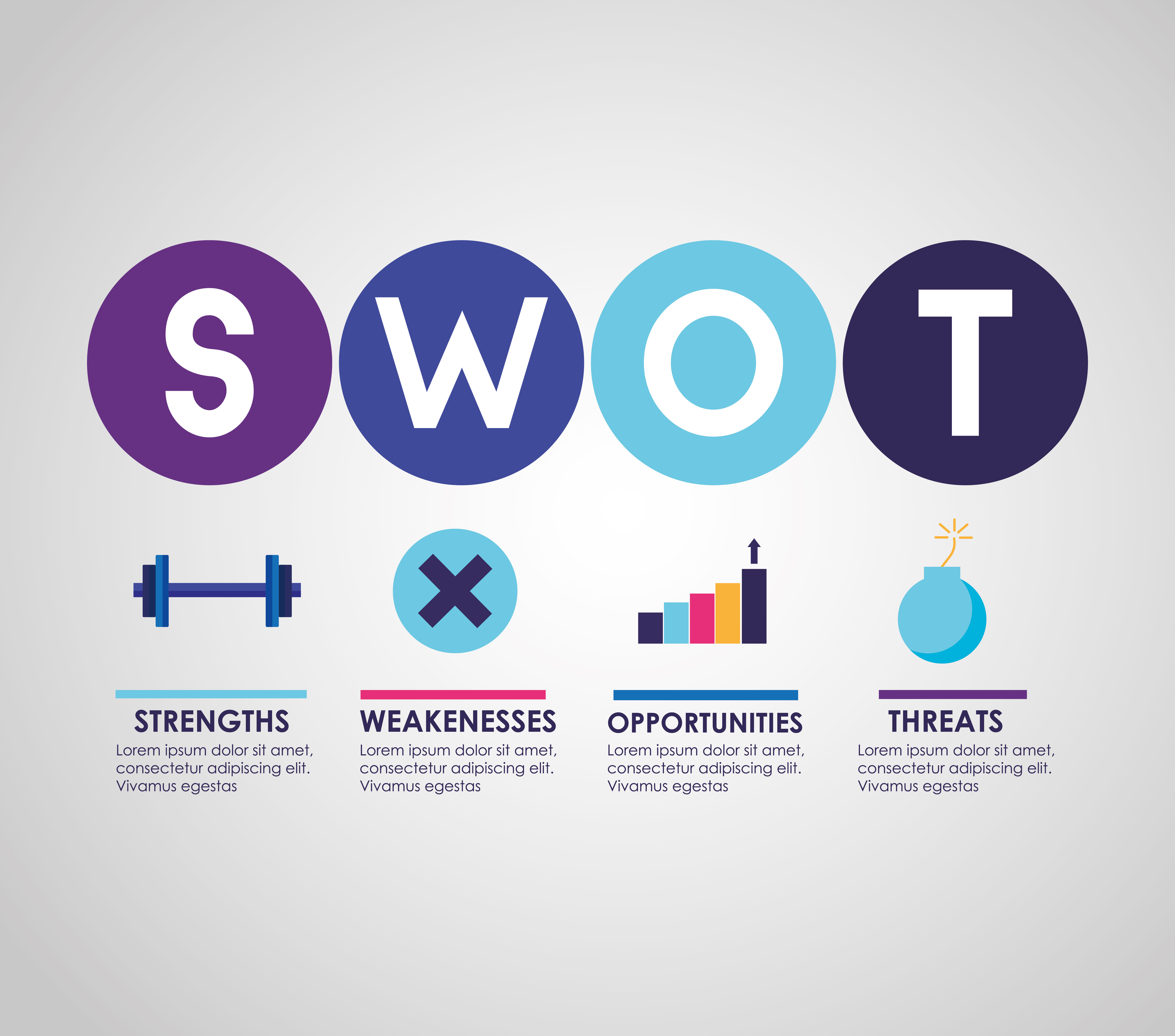Unlock the Full Potential of HubSpot for Your Financial Services Firm
HubSpot is a powerful platform—but to truly unlock its value in the financial services industry, you need more than just tools. You need a strategy...
2 min read
Markezing Team : Jun 24, 2024 10:45:00 AM

Unlock the power of strategic planning with this comprehensive SWOT analysis template. Learn how to leverage your strengths, mitigate weaknesses, seize opportunities, and navigate threats to craft a winning plan for success.
SWOT analysis is a strategic planning framework used to evaluate the strengths, weaknesses, opportunities, and threats of a business or project.
It involves identifying internal factors (strengths and weaknesses) and external factors (opportunities and threats) that can impact the success of the organization.
.jpg?width=533&height=400&name=Neutral%20SWOT%20Analysis%20Template%20(1).jpg)
By conducting a SWOT analysis, businesses can gain valuable insights into their current situation and develop strategies to capitalize on strengths, address weaknesses, seize opportunities, and mitigate threats.
To conduct a SWOT analysis, follow these steps:
1. Identify Strengths: Determine the internal factors that give your organization a competitive advantage. These can include unique resources, skills, or market position.
2. Identify Weaknesses: Recognize the internal factors that hinder your organization's success. These can include lack of resources, poor infrastructure, or limited expertise.
3. Identify Opportunities: Identify the external factors that could benefit your organization. These can be emerging markets, industry trends, or technological advancements.
4. Identify Threats: Recognize the external factors that could negatively impact your organization. These can include competition, changing regulations, or economic downturns.
5. Analyze and Prioritize: Evaluate the significance of each factor and prioritize them based on their impact on your organization.
6. Develop Strategies: Based on the analysis, develop strategies to leverage strengths, address weaknesses, seize opportunities, and mitigate threats.
7. Monitor and Update: Regularly review your SWOT analysis and update it as the business environment changes.
The structure of a SWOT analysis provides a framework for strategic decision-making. Here's how you can leverage it:
- Strengths: Identify how you can leverage your strengths to gain a competitive advantage in the market.
- Weaknesses: Develop strategies to address and mitigate your weaknesses, turning them into strengths.
- Opportunities: Determine how you can capitalize on the opportunities available in the market.
- Threats: Develop strategies to navigate and mitigate the threats that could impact your organization.
By leveraging the SWOT analysis structure, you can align your strategic planning with the identified factors and make informed decisions.
To maximize the results of your SWOT analysis, consider the following strategies:
- Focus on Actionable Insights: Identify the key insights from your analysis that can be translated into actionable strategies.
- Collaborate: Involve key stakeholders in the analysis process to gain diverse perspectives and ensure buy-in for the strategies.
- Set Clear Objectives: Define clear objectives and goals that align with the identified strengths, weaknesses, opportunities, and threats.
- Regularly Review and Update: Continuously review and update your SWOT analysis as the business environment evolves.
- Monitor Competitors: Keep an eye on your competitors' activities and adjust your strategies accordingly.
By implementing these strategies, you can maximize the effectiveness of your SWOT analysis and drive better results for your organization.
Once you have crafted a winning plan based on your SWOT analysis, it's time to implement it. Here are some key steps to follow:
- Develop an Action Plan: Break down your strategies into actionable steps and assign responsibilities to team members.
- Allocate Resources: Allocate the necessary resources, such as budget, manpower, and technology, to support the implementation of your plan.
- Communicate and Align: Ensure clear communication of the plan to all stakeholders and align their efforts towards the common goals.
- Monitor Progress: Regularly track the progress of your implementation plan and make adjustments as needed.
- Evaluate and Learn: Continuously evaluate the outcomes of your plan, learn from successes and failures, and make improvements for future implementation.
By effectively implementing your winning plan, you can turn your SWOT analysis into tangible results and achieve success.

HubSpot is a powerful platform—but to truly unlock its value in the financial services industry, you need more than just tools. You need a strategy...

Unlock the secrets to a successful e-commerce product launch with these essential pre-launch tactics designed to maximize impact and drive sales.
.jpg)
Learn how to plan a successful marketing campaign with our quick guide. Marketing campaigns can be daunting, but with the right planning and...